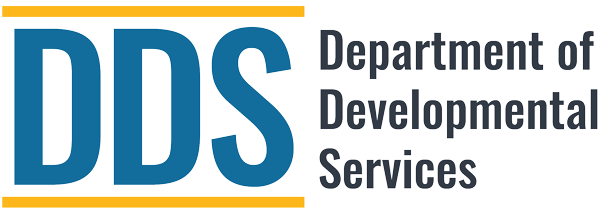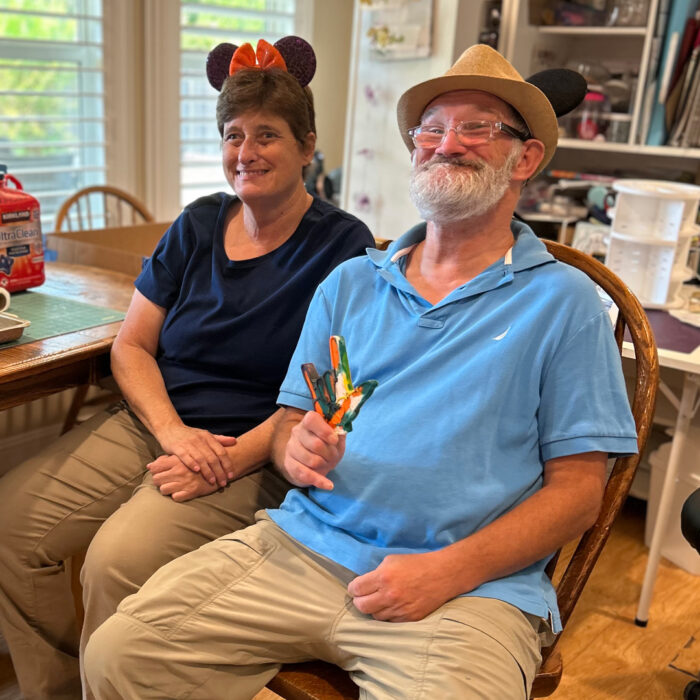Amy and Todd want the same things many people want. They want to feel safe in their home, visit friends, travel to places they enjoy, and play with their dog, Buddy. They also want the freedom to do more on their own.
“I want to be independent and not have to rely on staff as much,” said Amy.
Amy is part of the Alta California Regional Center’s Technology Pilot Program, which tests tools that can support people with intellectual and developmental disabilities (IDD) to live the way they choose. For DeafPlus participants like Amy and Todd, small changes can make a big difference.

Amy and Todd’s place features monitoring sensors in the garage and along the perimeter of the home, that trigger light alerts inside the home.
What’s Changed at Home
About five years ago, Todd was out on a bike ride when Amy FaceTimed him to come home because there was water all over the floor.
“Oh, my goodness. I must have left the water running,” thought Todd.
Incidents like these are not uncommon in homes where people who cannot hear may not immediately be aware that they’ve left water or another appliance running.
Now, concerns about things like the damaged floors in their dining area and laundry room may be a thing of the past. Thanks to the pilot program, all the sink faucets in their home automatically shut off when they’re not in use. That’s just one of the many new, accessible features in their home.

Water faucets sensors automatically shut off when not in use.
In 2022, Alta California Regional Center with the Department, technology vendors, and service providers like Strategies to Empower People (STEP) Agency, launched the Technology Pilot Program. The pilot explores how remote supports, and smart devices can reduce the need for on-site staff while increasing independence, safety and community inclusion.
“My goal? Peace of mind,” said Amy of the reason why she volunteered to be one of the 28 people in the pilot program. “This technology definitely helps me.”

The fire alarm alert features flashing lights.
Other features include:
- Safety alerts such as flashing fire and carbon monoxide alarms. When a fire alarm is triggered, there is a special light fixture to alert them to which alarm is going off. Water leak sensors use lights too.
- Emergency support buttons that Amy or Todd can press if they fall or have another urgent need. These buttons send an alert straight to a monitoring center.
- Home security tools, such as automatic locks, door and cabinet sensors, and surveillance cameras around the perimeter of the house, that notify the monitoring center when something is left open or when a visitor is near the house.
- Daily living supports including a smart oven that scans meal packets and sets the correct time and temperature to cook them.
When a suspicious alert goes to the monitoring center, staff can reach out to Amy and Todd via videophone to make sure they are ok. Staff at the center can communicate in each participant’s preferred language. When Amy and Todd answer, staff connect with them in ASL. If they do not respond, staff are sent to their home to check in.
“It’s a blessing,” says Karen McDaniel, Amy’s Direct Support staff supervisor about the technology installed in the house. “Not only do we need deaf accessibility in the community, but we also need it in our homes as well.”
Learning What Works
Not every device tested turns out to be the right fit, and that is ok. The pilot is designed to find the right tools to support each person’s goals.
When something doesn’t work, Amy and Todd and their support team work with their service provider to find alternatives that better meet their goals.
For example, a smart medicine dispenser that alerted Amy’s support staff when she accessed medication often stopped working, so she returned to a simpler pill organizer. She and Todd are also weighing the cost of certain services once the pilot is over, like the pre-packaged meals that work with the scanning feature for their new smart oven.
Jessika Laube, program manager at STEP, says that, despite delays, being able to try out technology and switch gears when something isn’t working has been a positive experience of the pilot.
“We gave feedback and the team listened,” Jessika said. “We are still learning together.”

When the monitoring center receives a suspicious alert, they contact Amy and Todd to make sure everything is okay.
What comes next?
Participants, including Amy and Todd, are helping shape the future of the program.
Their experience can help determine what works, what needs improvement, and how technology can support people to feel safer and live with more control over their lives.
A recent review of the program showed that the independence of the participants rose from 58% before the pilot to 85% during the pilot. Most participants also were satisfied with their inclusion in deciding which devices would work best for them.
Given this success, the hope is to implement the technology program across more regional centers next year. As the pilot program expands, more Californians receiving regional center services will be able to work with their service providers to identify smart technology that supports their life goals.
What that looks like for each person will be different.
Lately, Amy and Todd have been making multicolor wax crayons in the shape of a hand signing “I love you” in American Sign Language. They hope the profits from their sales will help pay for an upcoming trip.
This serves as a reminder that the right supports aren’t just about safety. They’re also about making room for living fully.
“Deaf people can do anything,” Todd reminded us. “I don’t like the word ‘can’t’. There is no ‘can’t’.”

